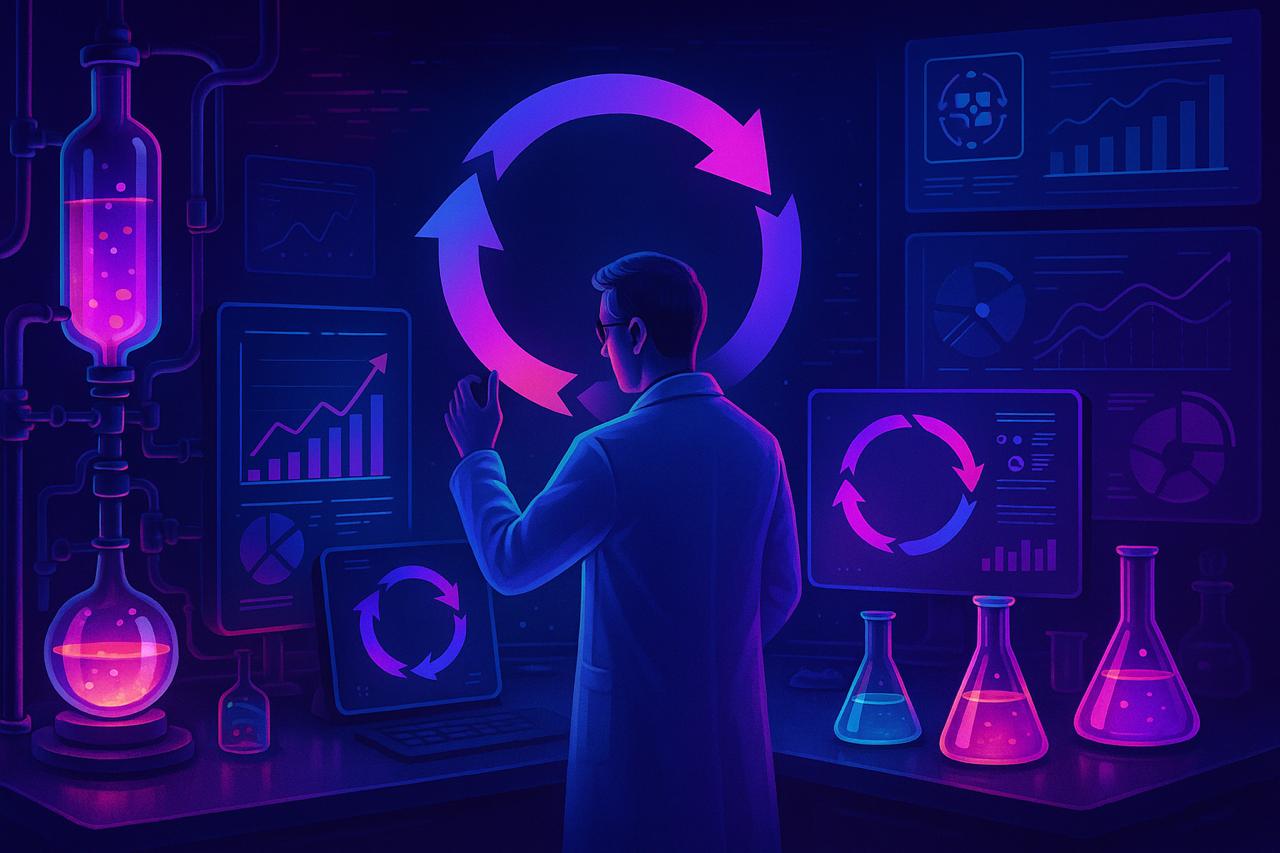Intro: Small Experiments, Big Systems
Growth doesn’t start with massive campaigns, it starts with small, smart experiments. Think about Airbnb’s earliest days manually emailing hosts, or Dropbox offering a simple referral incentive. These weren't ads or influencers. They were micro-tests that evolved into self-reinforcing systems, systems we now recognize as the foundation of scalable growth marketing.
Growth marketing is the mindset and methodology of building, testing, and scaling loops across the customer journey. It replaces isolated channel tactics with interconnected systems that compound over time. By aligning Acquisition, Retention, and Monetization, growth marketing creates flywheels that continuously amplify output from earlier inputs. The more the system works, the more it feeds itself.
If you’ve ever wondered how a small startup became a category leader, the answer often lives in their early growth loops. This article unpacks the mechanics behind that success and how you can start building your own.
Why
Traditional marketing relies heavily on one-time tactics, large-scale campaigns, rebrands, big launches. The problem? They’re slow to learn from, expensive to fix, and hard to repeat. Growth marketing replaces these with modular sprints that allow teams to:
• Learn faster: Small experiments deliver insights in days, not months.
• Spend smarter: Scale only what works, eliminate guesswork.
• Compound success: Every successful loop can be reused, expanded, or layered.
• Eliminate silos: Each experiment is tied to business outcomes, not channel vanity metrics.
More importantly, sprint-style testing doesn’t just test what works today. It teaches your team how to test, adapt, and learn continuously, which is critical in fast-moving markets.
How
1, Model Your Funnel and Metrics
Start by mapping your core metrics:
• LTV (Customer Lifetime Value)
• CAC (Customer Acquisition Cost)
• Activation Rate
• Churn/Retention Rate
• Average Revenue Per User
From here, model small improvements in each area. If you lift retention by 10%, how does that change LTV? What if CAC drops due to a referral loop? This gives you clarity on which loops have the most leverage.
2, Identify and Map Growth Loops
Every part of the funnel can support loops:
• Acquisition Loops: Referrals, SEO content engines, UGC amplification
• Retention Loops: Habit-forming user flows, usage-triggered reminders
• Monetization Loops: Upsell triggers, tiered pricing, win-back campaigns
Map user actions that create more value, engagement, or visibility, then look for ways to reinforce and repeat that behavior.
3, Build Your Experiment Pipeline
Each loop should be tested via a structured sprint:
• Hypothesis: "If we add X, we expect Y to increase by Z%"
• Timeline: Usually 7, 14 days
• Execution: A/B test, control group, or phased rollout
• Metrics: Primary and secondary KPIs
Use a test board or sprint tracker to prioritize experiments by expected impact vs ease of execution.
4, Analyze, Iterate, and Scale
After every sprint:
• Look for early signals
• Align outcomes with business KPIs
• Decide to scale, adjust, or sunset
Then move to the next loop. Over time, these iterations stack to form a durable, defensible growth engine.
What
TOFU (Top of Funnel), Acquisition
• Referral Loop Sprint: Test incentive design (credit vs discount vs status)
• SEO Cluster Sprint: Build 3, 5 linked articles targeting long-tail search intent
• Paid Channel Test: Trial creative, landing page variants across 2 audiences
MOFU (Middle of Funnel), Retention
• Onboarding Flow Sprint: Add checklist or progress bar to improve activation
• Nudge Campaign: In-app prompts based on time-to-action lag
• Content Sequence: Test gated vs ungated educational flows
BOFU (Bottom of Funnel), Monetization
• Upsell Flow: Dynamic upgrade prompt triggered by usage behavior
• Cross-Sell Prompt: Suggest adjacent product during checkout
• Pricing Experiment: A/B test anchor pricing layout or bundling strategy
Cross-Funnel
• Full Journey Funnel: Combine SEO content, lead magnet, nurture, upsell flow into one end-to-end test.
FAQs
What makes growth marketing different from traditional marketing?
It focuses on system design, not just storytelling. It optimizes for retention and monetization, not just impressions or clicks.
Do I need a technical team to do this?
Not necessarily. Many growth sprints can be executed with no-code tools or directly in CMS/CRM platforms.
What’s the ideal sprint length?
7 to 14 days is ideal. Fast enough to learn, long enough to get signal.
Can I run multiple sprints at once?
Yes, as long as they target separate loops or segments to avoid signal collision.
What metrics should I use to measure success?
Choose one North Star metric per loop (e.g., invite conversion, activation %, upgrade rate).
What if a test fails?
A failed test is a successful learning. Each invalidated hypothesis saves future time and cost.
How do I ensure my team stays aligned?
Keep an experiment board visible. Assign owners. Run weekly growth reviews.
Can growth loops be applied to service businesses or agencies?
Absolutely. Content, referrals, and lead nurturing sequences can all become repeatable loops.
What’s the biggest mistake teams make?
Trying to run too many sprints without tying them to clear metrics. Focus drives compounding results.
How do I manage resources when running multiple loops?
Use a sprint tracker, limit the number of active tests, and prioritize based on projected impact.
Conclusion: Your Path to Flywheel Growth
Growth marketing isn’t a tactic, it’s a mindset and a system. By building loops across acquisition, retention, and monetization, and testing them through structured sprints, you unlock scalable, self-funding growth.
Instead of guessing what works, you prove it. Instead of burning budget, you build momentum. And instead of running one campaign at a time, you build a growth engine that powers itself.
Ready to run your first sprint? Book a free growth diagnosis. Let’s build your flywheel.



%20Strategy%20and%20How%20Do%20You%20Build%20One%20That%20Works%3F.jpeg)





